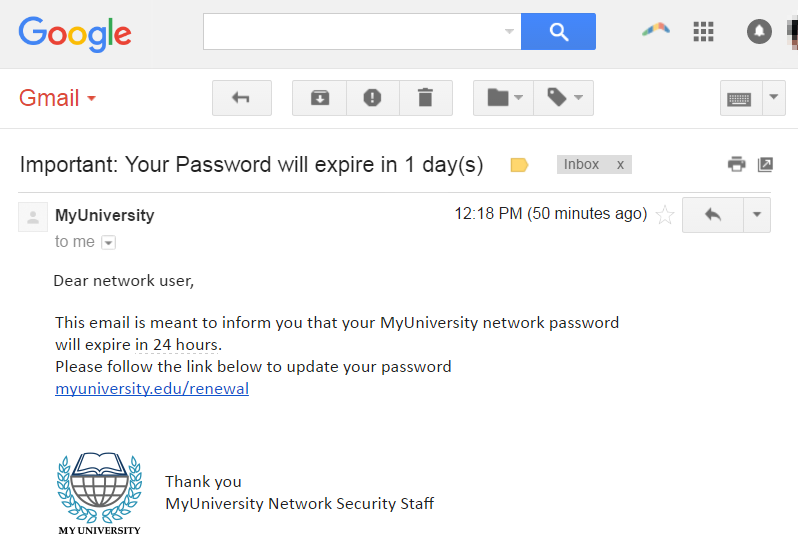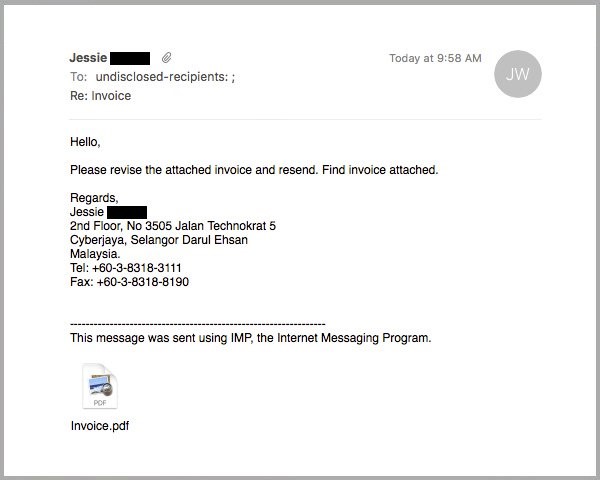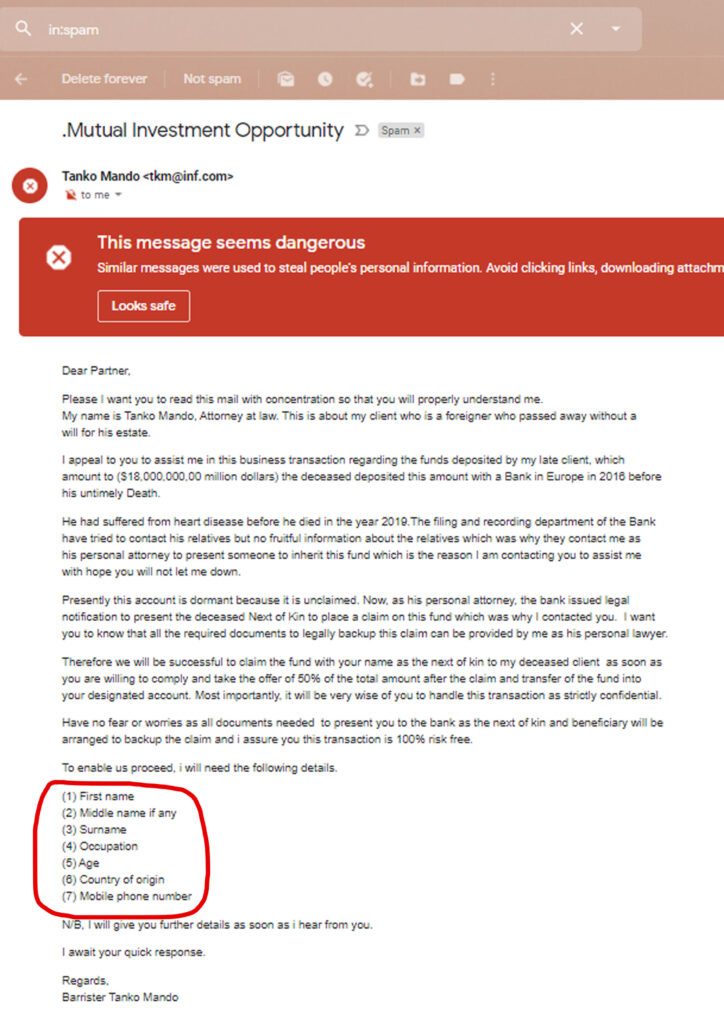Phishing is one of the most popular ways a hacker can steal your information and it’s predominantly done via email. There are a few types of spam emails you need to watch out for such as:
- Spoofing – email messages with a forged sender address
- Bogus offers – emails usually offering fake jobs, products or services.
- Requests for help – emails pretending to be someone you trust, asking for help
- Business email compromise – emails targeting commercial, government and non-profit organisations
And although each is different they all have one thing in common – to get you to reveal your personal information, that can negatively impact your digital security.
Nowadays, spam mails are written very well and usually include a company or business logo like PayPal or eBay to appear more legit. But there are still a few ways to tell if an email is real or a scam.
Here are a few clues and giveaways.
1. Emails with bad grammar or spelling mistakes
Okay, this is kind of an obvious one. This is the easiest and quickest way to tell if an email is spam. A lot of companies have their emails professionally written or at least have applied a spell-checking tool to all outgoing emails.
This isn’t to say that all emails that have spelling mistakes are spam. Ultimately it’s your responsibility to gage the context and determine whether it could be spam mail or not.
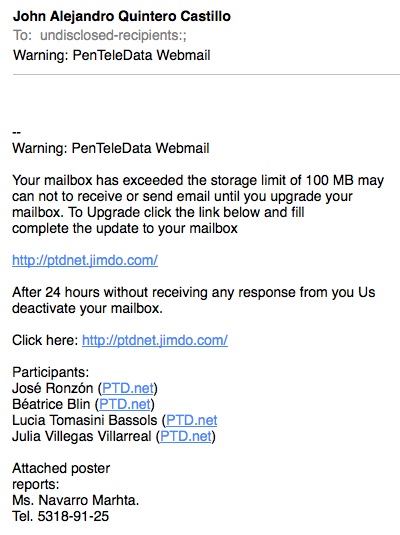
2. Misspelt domain name
It’s pretty easy for anyone to buy a domain name from a register. And although each name must be unique, sometimes they can be really similar. Hackers will try to recreate a popular domain name like Amazon.co.uk, which can be slightly changed to Amazons.co.uk. This can attract victims into a false sense of security. Hackers rely on the fact that not everyone will check the sender address, especially if it’s from someone you get emails from on a regular basis. This can include your bank, doctor, a solicitor, or a government department.
3. Suspicious attachments
As we know already, spam mail can come in any form and a lot of the times can include a suspicious attachment or link. These attachments and links are infected – meaning they contain malware. The purpose of these type of emails is to obtain personal and sensitive information such as credit card details, account numbers, login details and phone numbers.
As soon as the attachment is opened or the link is clicked, it’ll be too late. The document exposes malware onto the computer, which can steal information and implement vicious attacks.
4. Emails asking for personal details
If you get an email from an unknown sender asking for personal details, that should definitely ring alarm bells.
5. Emails that create a sense of urgency
The best way for a scammer to get information is to force you to take action before you have time to study the email for any inconsistencies.
Because a lot of people tend to procrastinate and not deal with problems straight away, creating a sense of urgency and threatening a negative consequence is common in spam mails.

Source: Mailjet 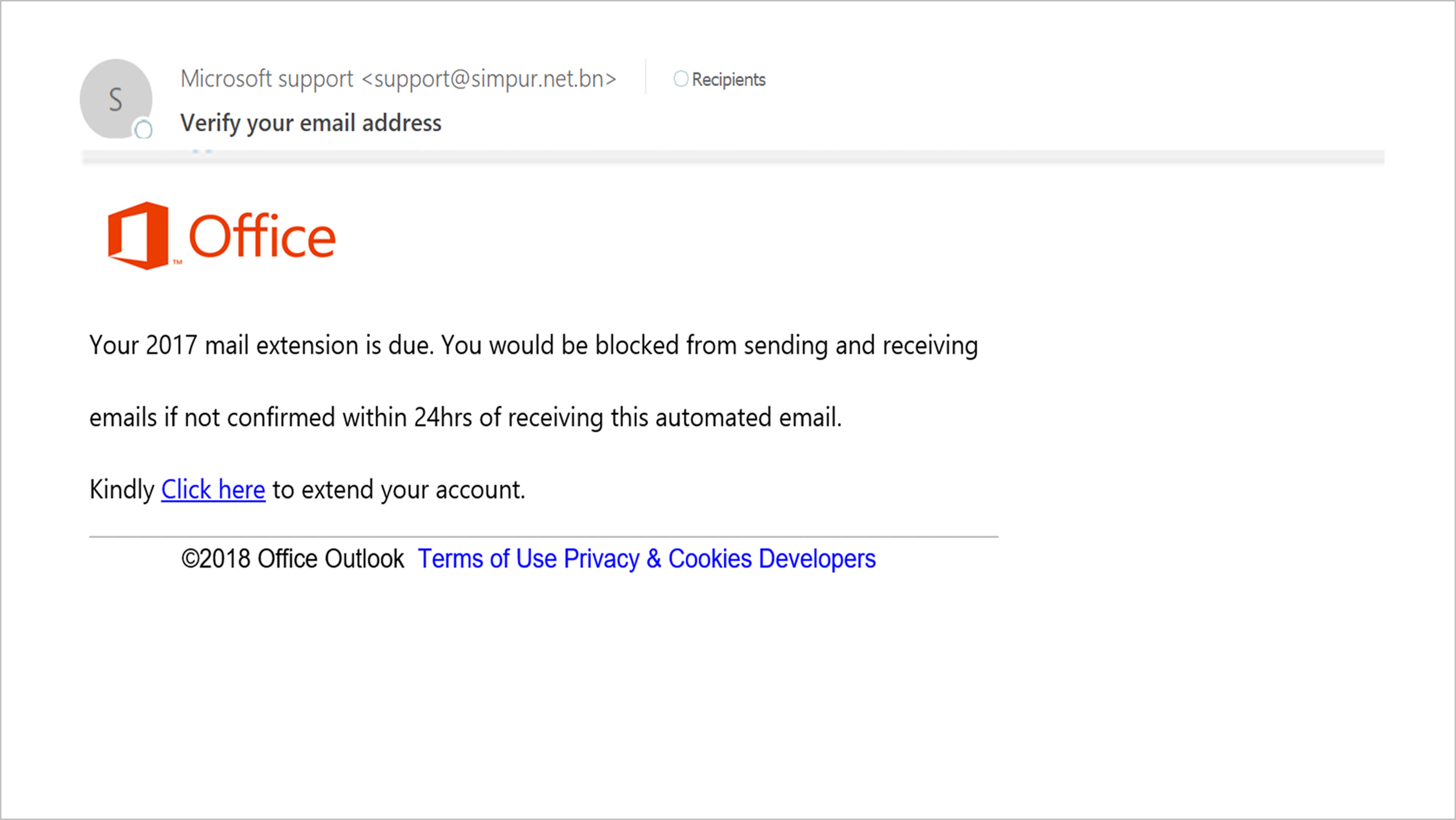
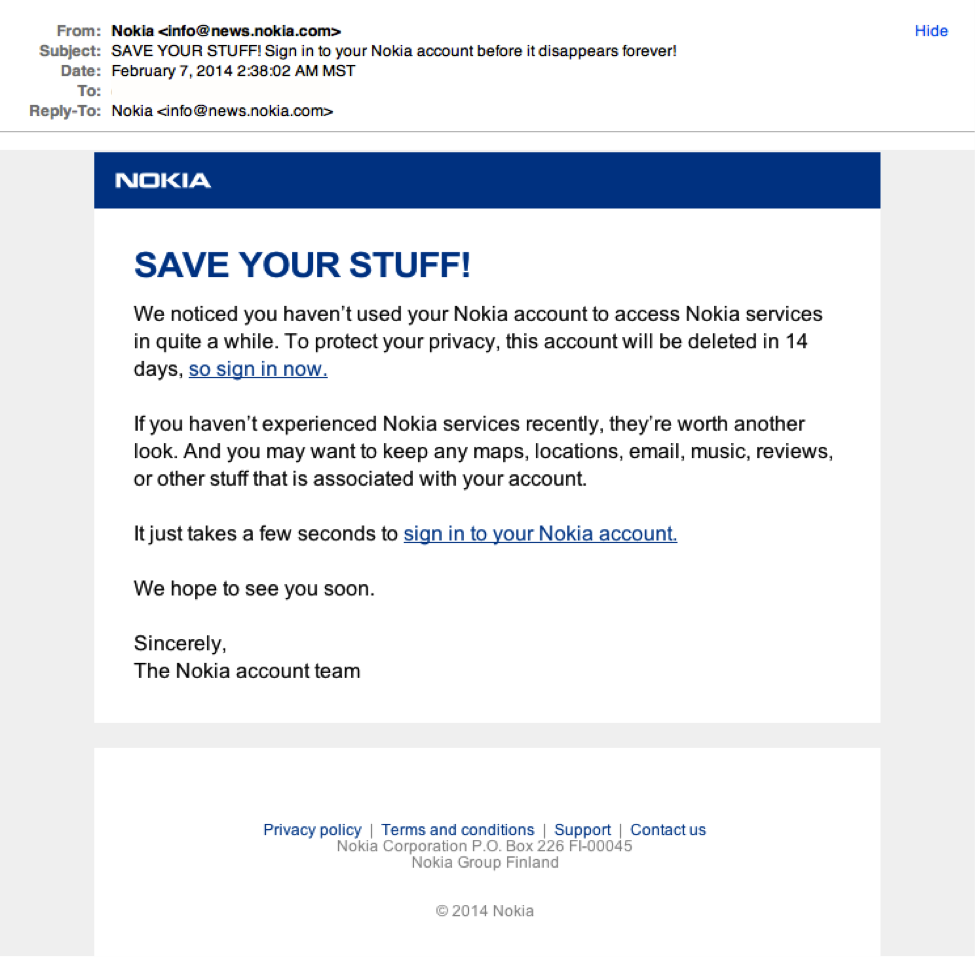
6. Emails that are too good to be true
If it seems too good to be true then it probably is! These are emails that grab your attention by saying you should claim your prize or you’re owed tax return.
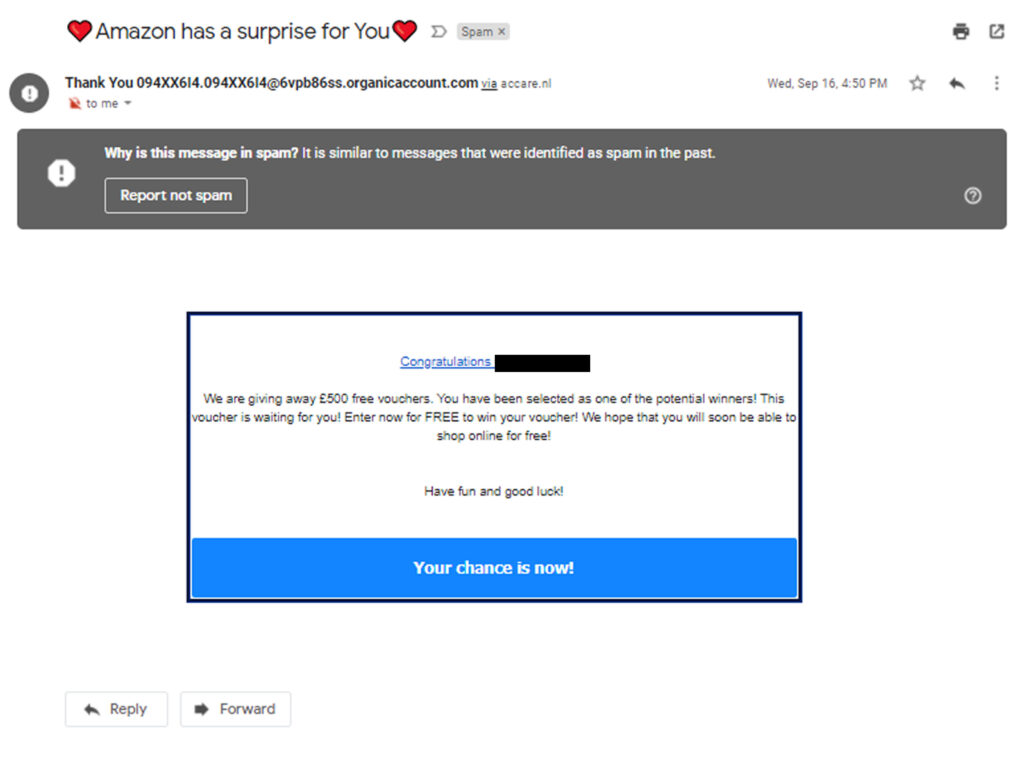
It’s important to recognise the signs of a spam mail. And an effective way to do so is to remind yourself of what you should look out for.
If you’re an employee in a workplace it’s always good to report any spam mail you’ve identified, chances are others would receive the same email but might not be aware that it’s spam.
Anti-phishing bars can be an extra security tool. This is a plug-in that can be added to your browser, which will alert you every time you access a phishing site.
So, now you know how to spot spam mail!
Read our last article on Top Cyber security Tips For The Workplace
#CyberSecMonth #BeCyberSmart


